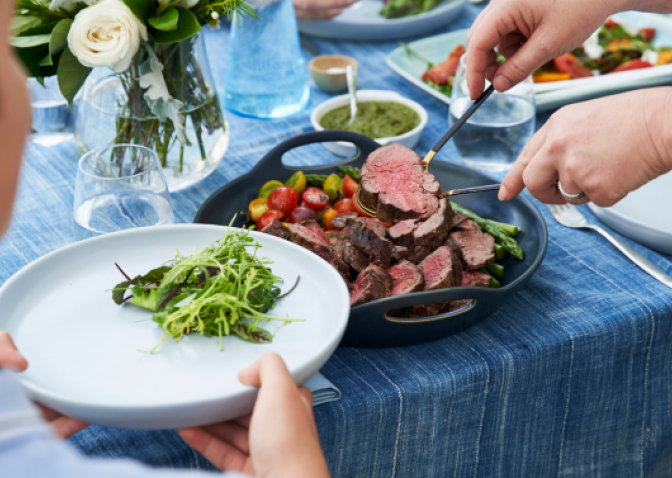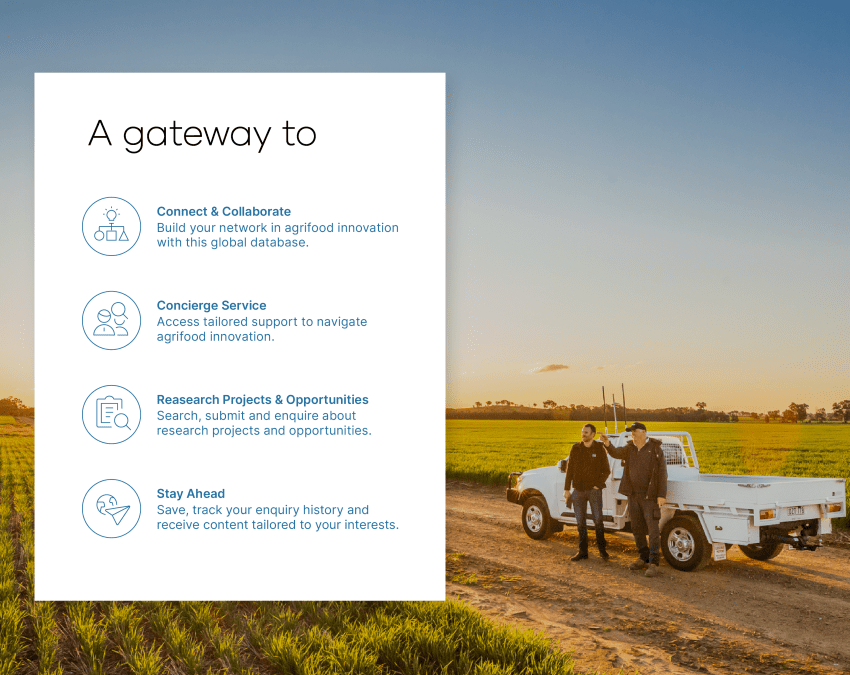
Investing for impact for Australia’s red meat sector
Sophisticated supply chains and increased collaboration, bolstered by the launch of growAG., is helping drive ag innovation and investments for Meat & Livestock Australia. MLA Managing Director, Jason Strong shares his goals to beef up the livestock industry and why blue sky technologies and value-adding are key.
_small-crop-1185x680.png)
In 2018 –2019 Australian agriculture faced one the worst droughts ever seen. Farmers were forced to destock hundreds of thousands of livestock and yet, despite their despair, we witnessed something remarkable.
Normally, prices would be expected to crash but instead: “All commodity prices in the red meat sector were at or above the five-year averages and we came out of that drought into a much better season and prices went sky high again,” said Jason Strong, Managing Director of Meat & Livestock Australia (MLA).
One of the drivers of that survival story, he continues were a series of initiatives put in place by the industry over the past 20 years including a more sophisticated supply chain with traceability, quality assurance, meat grading and trade agreements. “We now have 15 or so free trade agreements, whereas 20 years ago we had just one with New Zealand.”
It’s a serious success story and in his third year as MD of MLA, Jason is keen to continue that success, working on a variety of projects to create and capture more value for the red meat industry across the cattle, sheep and goat sectors.
MLA is Australia’s largest and leading agricultural Research and Development Corporations (RDCs) so has substantial funds from government and levy payers to invest. “But the real challenge is how to be impactful with that investment – our responsibility is to turn that into things that provide value whether it’s widgets, solutions or answering questions, that’s the real challenge.
RELATED: MLA funded BladeStop: a safety success story
“The agricultural industry is starting to understand that we can be most impactful when working together to achieve common goals or overcome shared challenges.
“Initiatives such as growAG. – or the recent launch of Agricultural Innovation Australia (AIA) – have given us a really good start, and while we should be proud of progress to date, we must all be committed to ensuring broader and more impactful collaboration to fully realise the ambitions of Australian agriculture on a global stage.”
Jason believes the agricultural industry is at a turning point. “We’re all getting motivated about doing more about adoption and implementation of what we’ve been investing in.”
“If we can bring to life the investments we’ve made by better connecting, not just across the supply chain but with those that can commercialise, utilise and exploit – we’ll capture more value.”
Related organisations

_small-crop-672x478.png)
Communication between RDCs is essential
With the pragmatism of a man used to dealing with large beasts whether in cattle stations or feedlots – Jason’s priorities are clear. Focusing on projects that can be put into action swiftly and have a “problem to attach themselves to” are key. He’s also keen to improve communication to let the red meat industry know what’s happening and to share information and collaborate with other RDCs.
“Increased collaboration in sharing and accessing information is a critical part to the success of RD&E in Australian agriculture.”
“You might not think there’s any similarity between cows and cotton but there is on soils and climate and many Australian farmers are mixed farmers – so getting those connections across the R&D outcomes is very important.”
Jason sees growAG. as an essential partner to help facilitate that with its collaboration between the Department of Agriculture, Water and Environment and Australia’s 15 RDCs.
Having all that information on agricultural research, technologies and commercialisation opportunities in one location is essential, he explained. “The faster we can make information available to give people an idea of where there might be a solution or opportunity that can be applied, the better off we’ll be.”
RELATED: Intuitive farm safety device, SoleMate, steps up for Aussie farmers
growAG. is going to be an essential tool to make a connection between the investments we have made as RDCs and those that can commercialise and utilise those investments.

Communication is a theme Jason returns to regularly, including when he addresses the agtech space which he agrees, “is definitely a priority but it also needs to be a big red flag – we’ve got to learn from what we’ve done in the past”.
He gives the example of ear tags or smart tags. “They’ve been a game changer for us as far as traceability is concerned and there’s no end of things we can miniaturise and put into an ear tag. In fact, I’m fully expecting someone to make a commitment that we can email our animals to market at some stage, that’s how ridiculous it’s getting with some of these offers!”
Jokes aside he said, “Let’s be frank about agtech. Every Australian farmer being able to make a call or send an email would be the most revolutionary thing we could do in agtech.
“If you can do that, you can tag a bunch of other things on the back of it – set up a wireless network, run automated systems and have a range of technology across your farm. If a system only works in the CBD it’s not going to be very useful out in the sticks.”
MLA looks at thousands of projects and Jason agrees it has a responsibility to invest in the newest, biggest and best blue sky technology but it also has to bring that technology to life as quickly and broadly as possible to capture the maximum value for the industry.
Goal is to be carbon neutral by 2030
At present MLA is focussing on a number of key areas, the most publicised of which has been sustainability through the red meat industry’s CN30 (carbon neutral by 2030) goal announced in 2017.
RDCs have invested in a massive amount of projects, and those include ideas to help reduce and capture emissions, he said but, frustratingly, they’re not easy enough to find.
“growAG. will change that as it offers a central spot to go, search and find.”
Another area Jason is excited about is value-adding so turning an animal into a variety of different products that can be sold all over the world.
The MLA is famous for its annual lamb ad, of course, but it endlessly seeks other ways to engage with consumers and satisfy demand for an ever-increasing variety of healthy, nutritious, economical meal solutions.
“Innovation isn’t just a shiny, bouncy widget,” said Jason. “It’s bringing to life the information and knowledge we have across the supply chain so consumers have a better and more enjoyable experience with our product.
“We want to put everyone in a better position.”
Explore all of Meat & Livestock Australia's research projects here.
Enjoyed this story? Sign up for our newsletter here and stay up to date with our latest stories, news and opportunities.
-crop-850x675.png)
Looking for engagement?
Showcase your commercialisation opportunity today.
Talk to our team to discuss how growAG. can connect your innovation to industry.
Have questions? Find answers to our most frequently asked questions on research projects, commercial opportunities, organisations and more.
